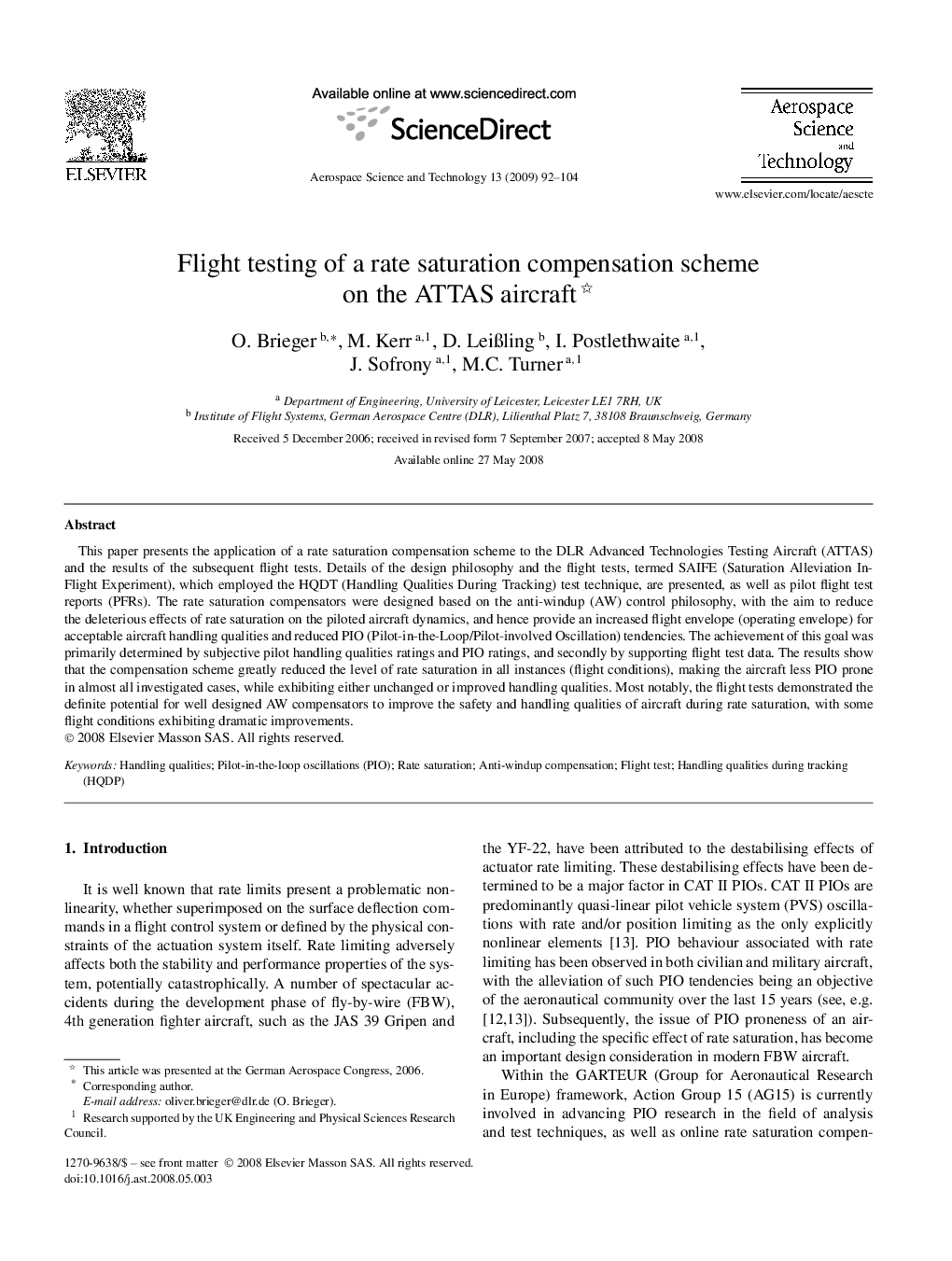| Article ID | Journal | Published Year | Pages | File Type |
|---|---|---|---|---|
| 1718895 | Aerospace Science and Technology | 2009 | 13 Pages |
This paper presents the application of a rate saturation compensation scheme to the DLR Advanced Technologies Testing Aircraft (ATTAS) and the results of the subsequent flight tests. Details of the design philosophy and the flight tests, termed SAIFE (Saturation Alleviation In-Flight Experiment), which employed the HQDT (Handling Qualities During Tracking) test technique, are presented, as well as pilot flight test reports (PFRs). The rate saturation compensators were designed based on the anti-windup (AW) control philosophy, with the aim to reduce the deleterious effects of rate saturation on the piloted aircraft dynamics, and hence provide an increased flight envelope (operating envelope) for acceptable aircraft handling qualities and reduced PIO (Pilot-in-the-Loop/Pilot-involved Oscillation) tendencies. The achievement of this goal was primarily determined by subjective pilot handling qualities ratings and PIO ratings, and secondly by supporting flight test data. The results show that the compensation scheme greatly reduced the level of rate saturation in all instances (flight conditions), making the aircraft less PIO prone in almost all investigated cases, while exhibiting either unchanged or improved handling qualities. Most notably, the flight tests demonstrated the definite potential for well designed AW compensators to improve the safety and handling qualities of aircraft during rate saturation, with some flight conditions exhibiting dramatic improvements.
